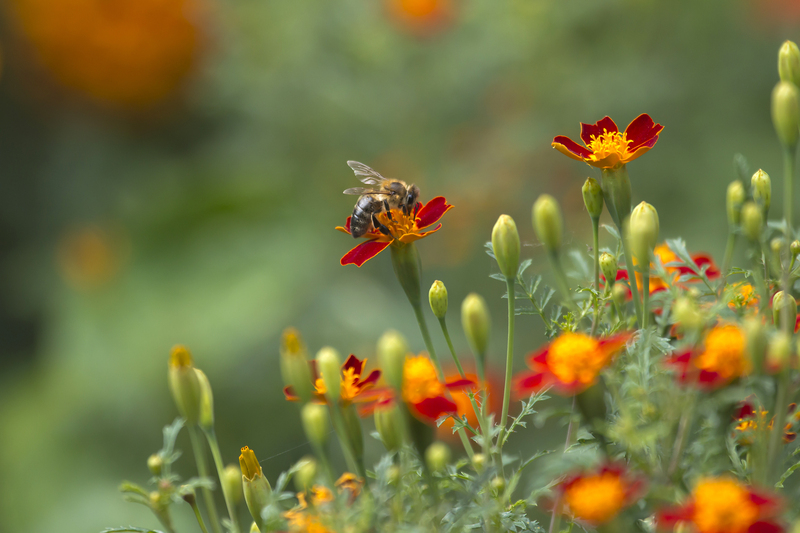Unlocking the Art of a Flawless Lawn: Expert Care Advice for Beginners
Are you dreaming of a vibrant, lush green oasis right outside your door? Perfecting the art of a flawless lawn might seem intimidating, but with the right guidance, even beginners can achieve a beautiful, thriving landscape. In this comprehensive guide, you'll uncover essential lawn care tips, expert strategies, and actionable steps to transform your yard into an envy-worthy masterpiece. If you're ready to learn about flawless lawn maintenance, keep reading to discover essential advice tailored for beginners.
Understanding the Basics: What Makes a Flawless Lawn?
Before diving into advanced lawn care techniques, it's crucial to understand the key ingredients behind a genuinely healthy, flawless lawn. Lawn perfection isn't just about visual appeal. It's a balance of soil health, grass variety, proper maintenance, and thoughtful seasonal care.
- Soil Quality: The health of your soil determines the vitality of your grass. Good soil structure, pH balance, and nutrient levels set the foundation for lush growth.
- Grass Selection: Choose grass species suited to your climate, lifestyle, and yard conditions for optimal results.
- Regular Maintenance: Consistent mowing, watering, feeding, and aerating are vital to any successful lawn care routine.
- Pest and Weed Control: Early detection and non-invasive management strategies build resilience and prevent damage.
- Seasonal Adjustments: Tailoring your care regimen to each season amplifies the health and beauty of your turf.
Unlocking the art of a flawless lawn begins with understanding these fundamental principles. Let's dive deeper into each aspect and break down the best lawn care advice for beginners.

Step 1: Assess and Prepare Your Soil
Why Soil Testing Matters
Healthy soil is the bedrock of a perfect lawn. Before planting or reseeding, conduct a soil test to measure pH and essential nutrient levels. Most grasses thrive in a slightly acidic to neutral pH (6.0-7.0).
- Test kits are available at garden centers, or you can send samples to professional laboratories for a comprehensive analysis.
- Based on results, amend your soil with lime (to raise pH) or sulfur (to lower pH) as needed.
Amending Soil for Flawless Lawn Care
Enrich your soil with organic matter, such as compost or well-rotted manure. This not only improves structure and drainage but also boosts nutrient content--unlocking the art of lush lawn growth from the ground up.
- Till or aerate compacted areas to allow roots to penetrate more deeply.
- Add topdressing annually to maintain soil fertility and a thriving lawn ecosystem.
Step 2: Select the Right Grass for Your Region
Cool-Season vs. Warm-Season Grasses
Choosing the appropriate grass species can be the difference between struggle and success. Identify whether you live in a cool-season (northern) or warm-season (southern) region:
- Cool-Season Grasses: Such as Kentucky bluegrass, fescue, and ryegrass. These thrive in regions with cold winters and moderate summers.
- Warm-Season Grasses: Such as Bermuda, zoysia, and St. Augustine. These species flourish in hot, sunny climates with mild winters.
Consult local garden centers or extension services for personalized recommendations.
Grass Varieties and Lawn Appearance
Your choice affects not only color and texture but also maintenance requirements and drought tolerance. For a truly flawless lawn, select disease-resistant varieties and blends adapted to your unique yard conditions.
Step 3: Planting and Seeding Techniques for Beginners
Sowing Seeds for a Fresh Start
Quality seeds yield quality lawns. Whether you're establishing a new lawn or overseeding thin patches, ensure even coverage for consistent growth. Use a broadcast spreader for best results.
- Follow recommended seeding rates for your chosen grass variety.
- Lightly rake seeds into the soil and gently water.
Installing Sod: Fast-Track to Flawless Lawns
For an instant transformation, lay sod pieces tightly together. Water frequently for the first few weeks to encourage rooting. Sod is a time-saving option for new homeowners eager to unlock the art of a flawless lawn quickly.
Step 4: Water Wisely--Not Too Little, Not Too Much
The Science of Lawn Watering
One of the most common mistakes beginners make while pursuing the art of a perfect lawn is inefficient watering.
- Water early in the morning to reduce evaporation.
- Most lawns require about 1-1.5 inches of water weekly, including rainfall.
- Invest in a rain gauge or timed irrigation system for optimal results.
Avoiding Common Watering Pitfalls
Overwatering promotes disease and shallow roots; underwatering leads to drought stress and bare patches. Find a balance by monitoring the weather and adjusting your schedule as needed.
Step 5: Smart Mowing Practices for a Polished Look
Set Your Mower High
A common lawn care myth is that a shorter cut means less mowing. However, taller grass shades roots, improves moisture retention, and prevents weeds from gaining ground. For most lawns, a cutting height of 2.5-4 inches is ideal.
Routine Maintenance Tips
- Only remove one-third of the blade at each mowing session.
- Keep mower blades sharp to avoid tearing grass and encouraging disease.
- Change mowing patterns to prevent soil compaction and ruts.
Proper mowing is a true cornerstone of achieving a flawless lawn and should not be underestimated.
Step 6: Effective Feeding and Fertilizing
Fertilizing Fundamentals for Beginners
Regular feeding is vital for a truly vibrant, green lawn. Choose high-quality, slow-release fertilizers that match your lawn type and the season:
- Apply nitrogen-rich formulas in spring and early fall for cool-season grasses.
- Fertilize warm-season lawns in late spring and summer for peak growth.
Always follow package instructions to avoid overfeeding and burning your grass.
Organic vs. Synthetic Fertilizers
Organic fertilizers enrich the soil long-term, improving texture and microbial health. Synthetic products give quick but short-lived boosts. For most beginners, a combination delivers the best of both worlds.
Step 7: Aeration--Letting Your Lawn Breathe
What is Lawn Aeration?
Aeration is the process of perforating the soil with small holes, allowing air, water, and nutrients to reach the roots. Heavily trafficked or clay-heavy soils benefit most from annual aeration.
When and How to Aerate
- Aerate cool-season lawns in early fall or spring.
- Aerate warm-season lawns in late spring through early summer.
- Remove soil plugs and allow them to break down naturally.
Unlocking the art of a flawless lawn is impossible without regular aeration and thatch management.
Step 8: Mastering Weed and Pest Control
Preventing Problems Before They Start
Vigilance is the key to flawless lawns. Healthy, dense turf naturally resists weeds and pests. However, occasional intervention is necessary for persistent issues:
- Use pre-emergent herbicides in early spring to block weed seeds.
- Spot-treat weeds with selective herbicides or natural remedies like vinegar.
- Encourage beneficial insects and apply targeted pest controls as needed.
Maintaining Balance
Never over-apply chemicals; follow Integrated Pest Management (IPM) principles for safe, sustainable lawn care. Having a systematic approach keeps your grass healthy and supports pollinators and wildlife.
Step 9: Adapt Your Care to the Seasons
Spring Lawn Care Tips
- Rake away debris and dead grass from winter.
- Aerate and overseed thin patches if needed.
- Begin fertilizing when growth resumes.
Summer Lawn Survival Strategies
- Raise mowing height and avoid mowing during heatwaves.
- Water deeply but less frequently.
- Watch for pests and brown spots.
Autumn and Winter Preparation
- Apply winterizer fertilizer and overseed bare spots in the fall.
- Rake leaves promptly to prevent suffocation and disease.
- Minimize foot traffic on dormant lawns in winter.
Step 10: Troubleshooting Common Lawn Issues
Patchy or Thin Grass
Reseed or overseed bare areas, ensuring good seed-to-soil contact and adequate watering.
Yellow or Stressed Lawn
This often signals drought stress, nutrient deficiencies, or improper mowing. Adjust your care regimen and consider soil amendments if problems persist.
Dealing with Disease
Fungal diseases show as rings, spots, or powdery coatings. Improve air circulation, reduce thatch, and switch to resistant grass varieties as needed.

Pro Tips for a Show-Stopping Lawn
- Leave grass clippings on the lawn to recycle nutrients.
- Edge borders for a manicured look.
- Consider mulching flower beds to suppress weeds and retain moisture.
- Use natural lawn boosters like compost tea or seaweed extract.
- Install a lawn irrigation system for consistent moisture control.
Unlocking the art of a flawless lawn is a journey, not a destination. With patience and practice, any beginner can turn their yard into a shimmering green retreat.
Final Thoughts: Cultivating Your Flawless Lawn--A Rewarding Journey Awaits
Achieving a flawless lawn doesn't require a green thumb--just commitment, observation, and expert advice. By starting with the basics and refining your routine season after season, you'll cultivate not just a lawn, but a personal retreat that reflects your care and creativity.
Ready to begin your lawn transformation? Follow these beginner-friendly tips, and soon you'll be the envy of your neighborhood. Remember: every great lawn starts with small but consistent steps!
Additional Resources
Mastering lawn care is an art--unlock it today for a healthier, greener tomorrow!